Critical intelligence lead US to intervene in India-Pakistan crisis: CNN
While Trump and Pakistan credit US mediation for the ceasefire, India offers a version that contradicts their account.
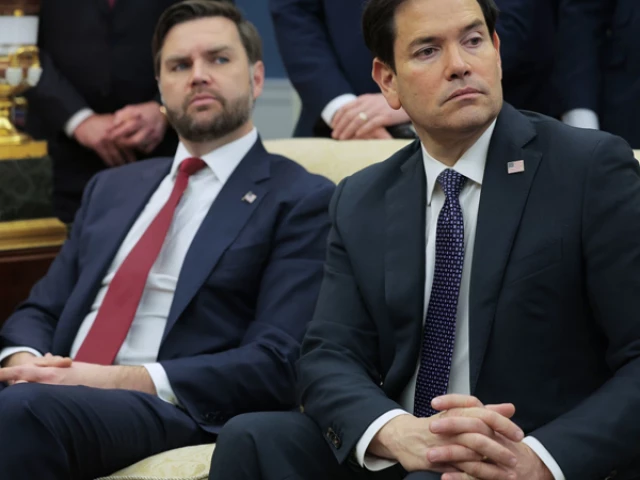
Trump administration officials revealed to CNN that the US received alarming intelligence during the escalating conflict between India and Pakistan, prompting top officials, including Vice President JD Vance, to intensify American involvement.
Nuclear-armed India and Pakistan stood on the brink of full-scale conflict after days of rising tensions, until US President Donald Trump announced that both nations had agreed to an "immediate and full ceasefire."
Without disclosing the nature of the intelligence, citing its sensitivity, the CNN report stated that a core group of senior US officials, including Vice President Vance, Secretary of State and interim National Security Adviser Marco Rubio, and White House Chief of Staff Susie Wiles, had been closely monitoring the situation.
On Friday morning, they received critical intelligence that convinced them of the need for deeper US engagement.
Read more: PM Shehbaz hails ceasefire, thanks nation, allies and global mediators
At that point, Vice President Vance briefed President Trump on a proposed course of action and then spoke with Indian Prime Minister Narendra Modi at noon. According to officials, Vance conveyed to Modi that the White House believed there was a high risk of dramatic escalation heading into the weekend.
The report claimed that Vance encouraged Modi to "communicate with Pakistan directly and to consider options for de-escalation."
It is worth noting that the behind-the-scenes details of US involvement had not been previously reported before the ceasefire agreement was announced.
Officials said the US believed the nuclear-armed neighbours were not communicating and that intervention was needed to bring them back to the bargaining table. Vance also presented Modi with a possible off-ramp that US officials understood Pakistan would be receptive to, though the specific details were not disclosed.
Following the call, State Department officials, including Rubio, worked through the night, contacting counterparts in India and Pakistan. Rubio had already been engaged in outreach since Tuesday, in efforts to tamp down the conflict. According to one official familiar with the calls, “it was clear at that point that the two sides weren’t talking.”
“The goal earlier this week was to encourage India and Pakistan to engage directly,” the source added, “and through those conversations, US officials gained insight into potential off-ramps for both sides. This helped bridge the communication gap and enabled the two sides to eventually reach an agreement.”
Officials clarified that the Trump administration did not help draft the ceasefire agreement but viewed its role as facilitating communication between the two countries.
The report further revealed that the critical juncture came when Vice President Vance called Prime Minister Modi, as Trump administration officials believed his personal rapport with Modi—strengthened during his visit to India and meeting with the prime minister last month—would make a difference.
It is also worth noting that Vance’s call came just a day after he had downplayed US influence in the conflict, stating it was “none of our business.”
“What we can do is try to encourage these folks to de-escalate a little bit,” Vance told Fox News on Thursday, “but we’re not going to get involved in the middle of a war that’s fundamentally none of our business and has nothing to do with America’s ability to control it.”
“You know, America can’t tell the Indians to lay down their arms. We can’t tell the Pakistanis to lay down their arms,” he added. “So, we’re going to continue to pursue this through diplomatic channels.”
The ceasefire was reached following a day of intense fighting on Saturday. Trump administration officials said that precise details regarding how the agreement will be monitored are still being finalied.
While Trump and Pakistan credit US mediation for the ceasefire, India has given a contradictory version claiming it was a direct bilateral agreement.
President Donald Trump announced on Saturday that Pakistan and India had agreed to a "full and immediate ceasefire," following what he described as a night of intense negotiations led by the United States.
In a post on Truth Social, Trump praised both countries for showing "common sense and great intelligence" in choosing diplomacy over conflict.
Shortly after, US Secretary of State Marco Rubio confirmed the agreement in a separate statement, noting that both governments had committed not only to halting hostilities but also to initiating dialogue on a broad range of issues at a neutral venue.
Over the past 48 hours, @VP Vance and I have engaged with senior Indian and Pakistani officials, including Prime Ministers Narendra Modi and Shehbaz Sharif, External Affairs Minister Subrahmanyam Jaishankar, Chief of Army Staff Asim Munir, and National Security Advisors Ajit…
— Secretary Marco Rubio (@SecRubio) May 10, 2025
Rubio added that he and Vice President JD Vance had been actively engaged with top leaders from both nations over the past 48 hours.
These included Prime Ministers Shehbaz Sharif and Narendra Modi, Pakistan’s Army Chief General Asim Munir, Indian External Affairs Minister Subrahmanyam Jaishankar, and both countries’ national security advisers—Ajit Doval and Asim Malik.
It is also pertinent to mention that, while Pakistan praised US involvement in the talks, India downplayed Washington’s role.
“We thank President Trump for his leadership and proactive role in promoting peace in the region,” Pakistani Prime Minister Shehbaz Sharif wrote on X, three hours after Trump’s announcement.
We thank President Trump for his leadership and proactive role for peace in the region .
— Shehbaz Sharif (@CMShehbaz) May 10, 2025
Pakistan appreciates the United States for facilitating this outcome, which we have accepted in the interest of regional peace and stability.
We also thank Vice President JD Vance and…
India’s Foreign Secretary, Vikram Misri, made no mention of US involvement in his announcement. An Indian statement asserted that the deal was worked out “directly” between the two countries.
India and Pakistan have today worked out an understanding on stoppage of firing and military action.
— Dr. S. Jaishankar (@DrSJaishankar) May 10, 2025
India has consistently maintained a firm and uncompromising stance against terrorism in all its forms and manifestations. It will continue to do so.

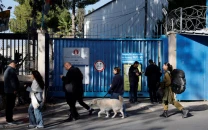
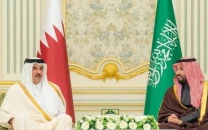

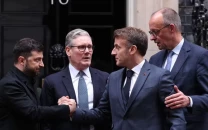

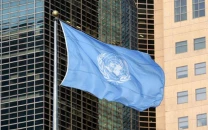

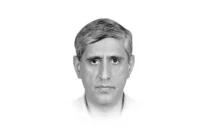


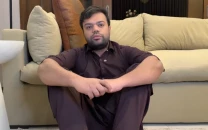







COMMENTS (1)
Comments are moderated and generally will be posted if they are on-topic and not abusive.
For more information, please see our Comments FAQ